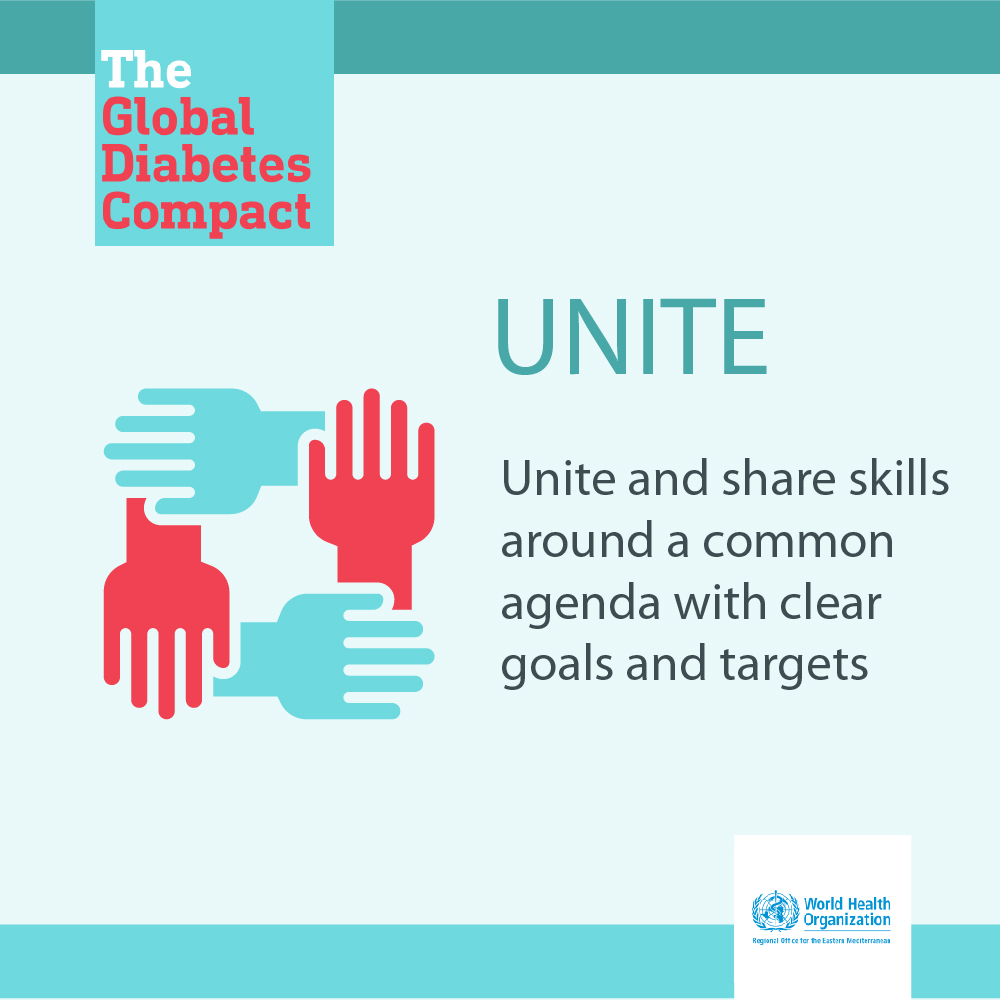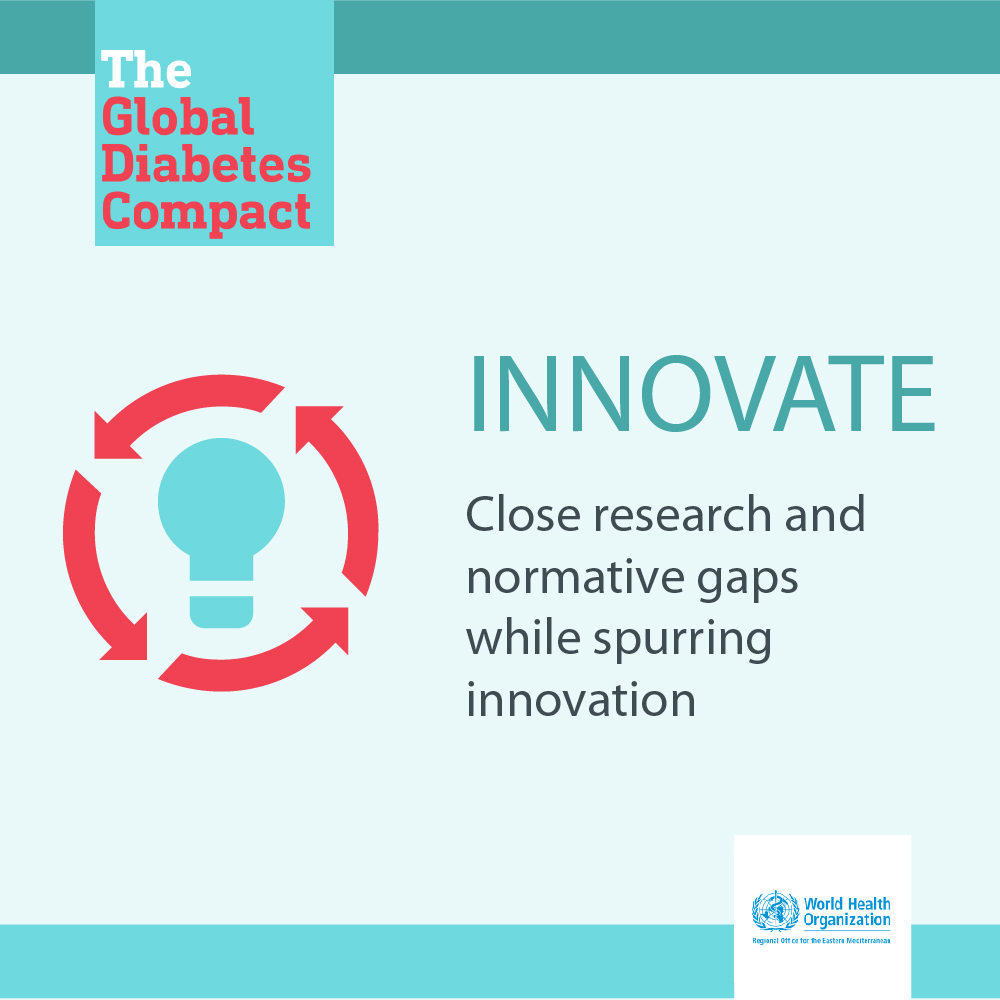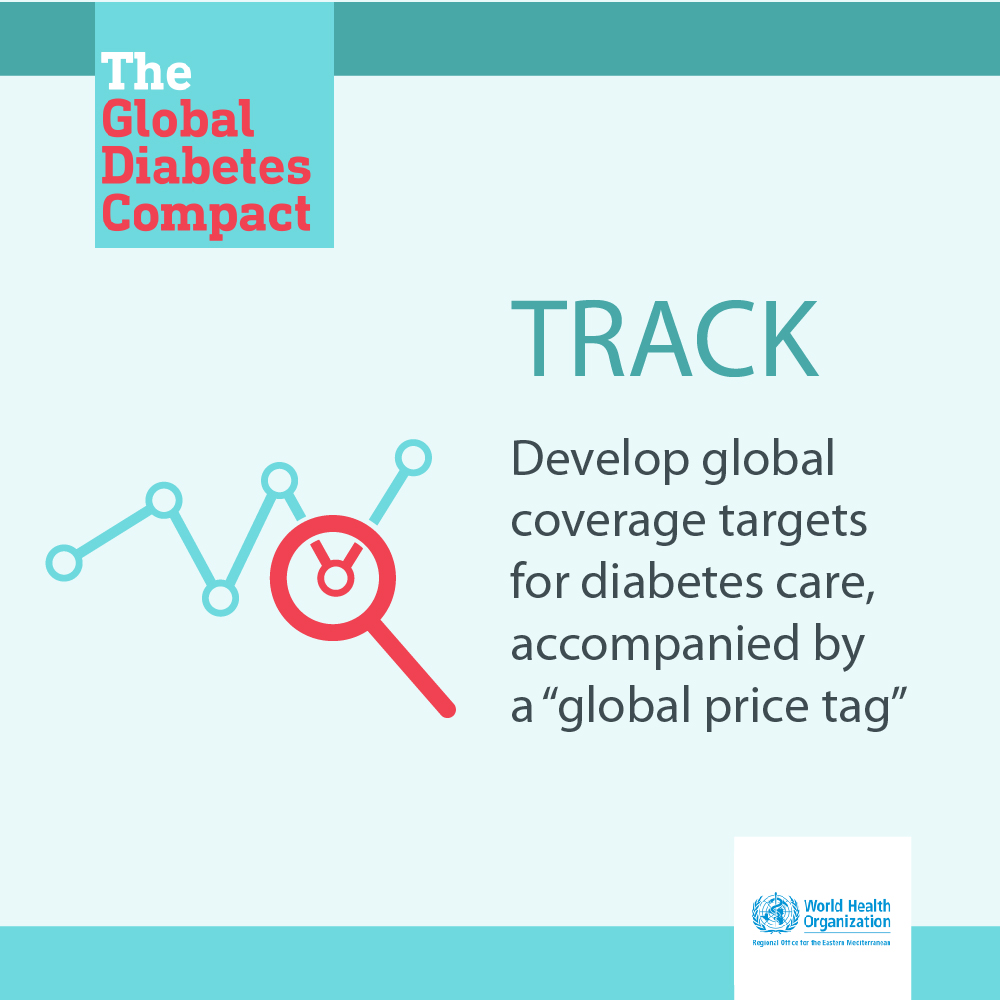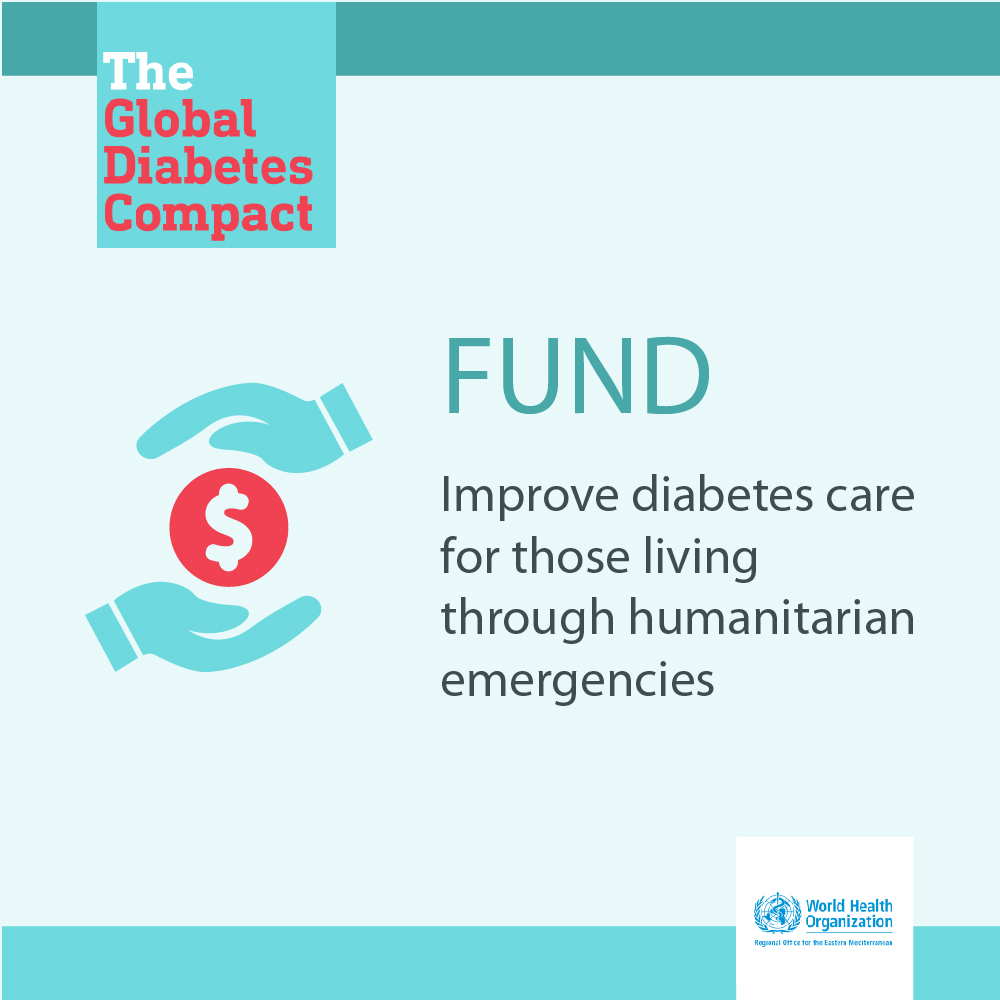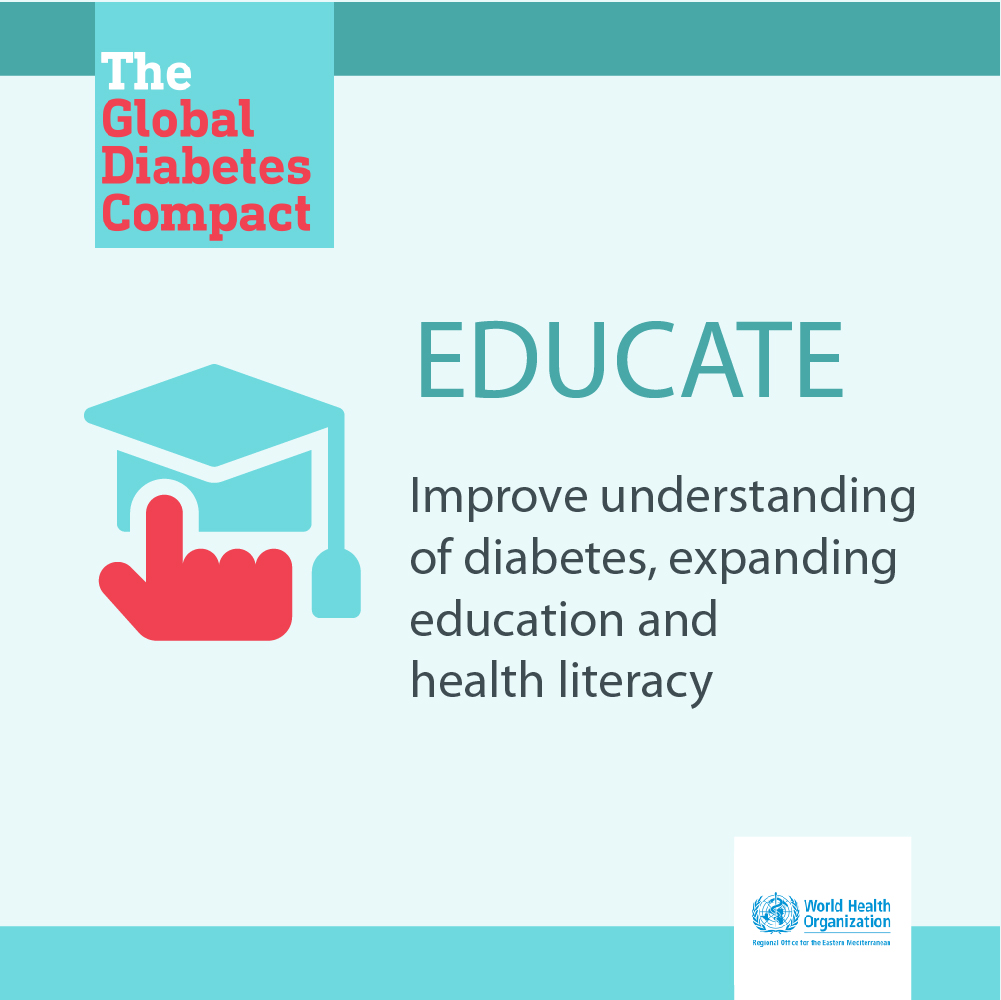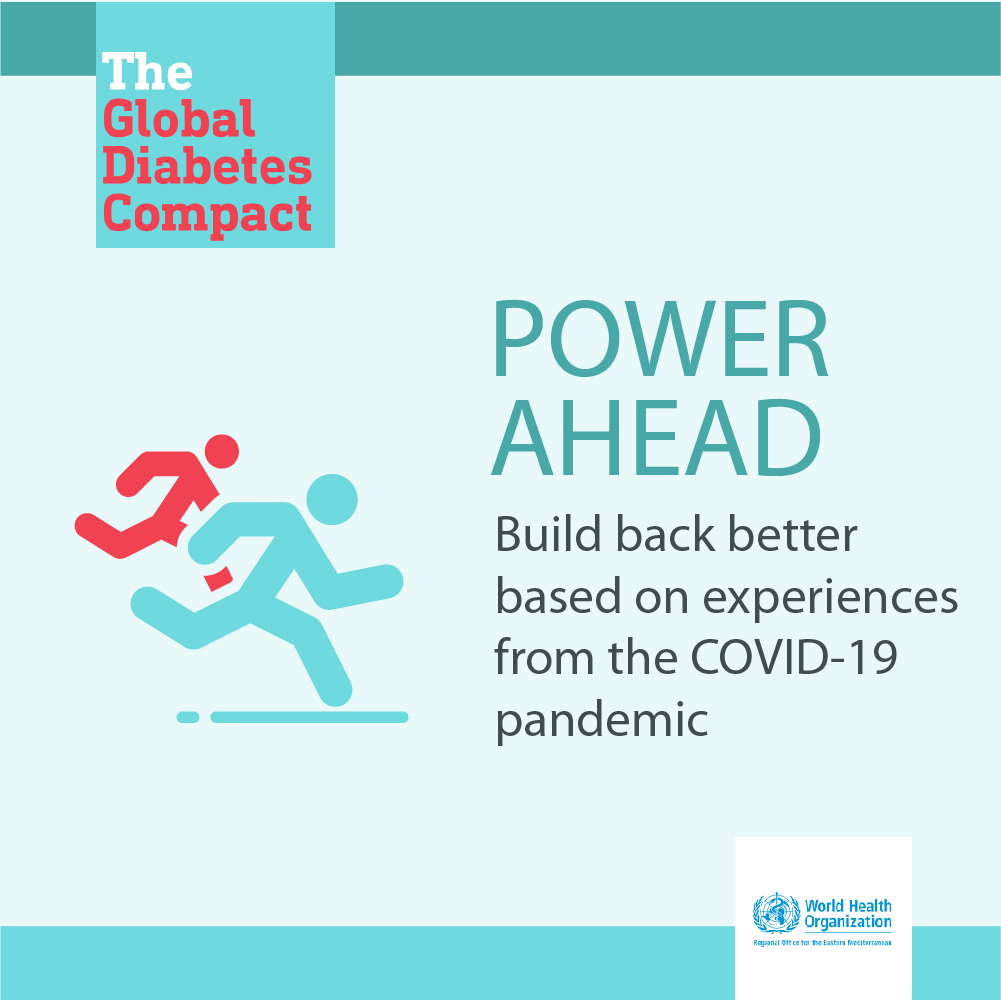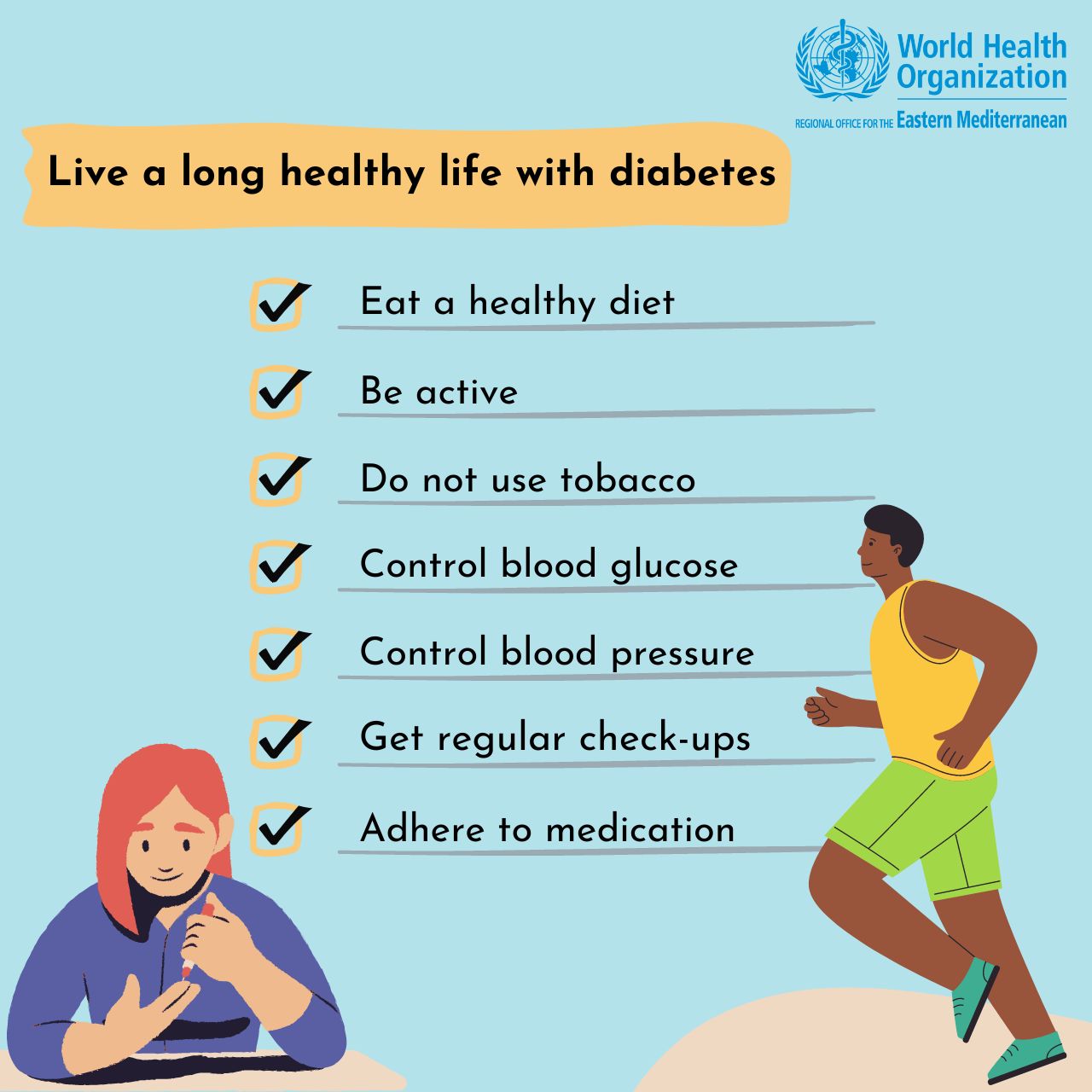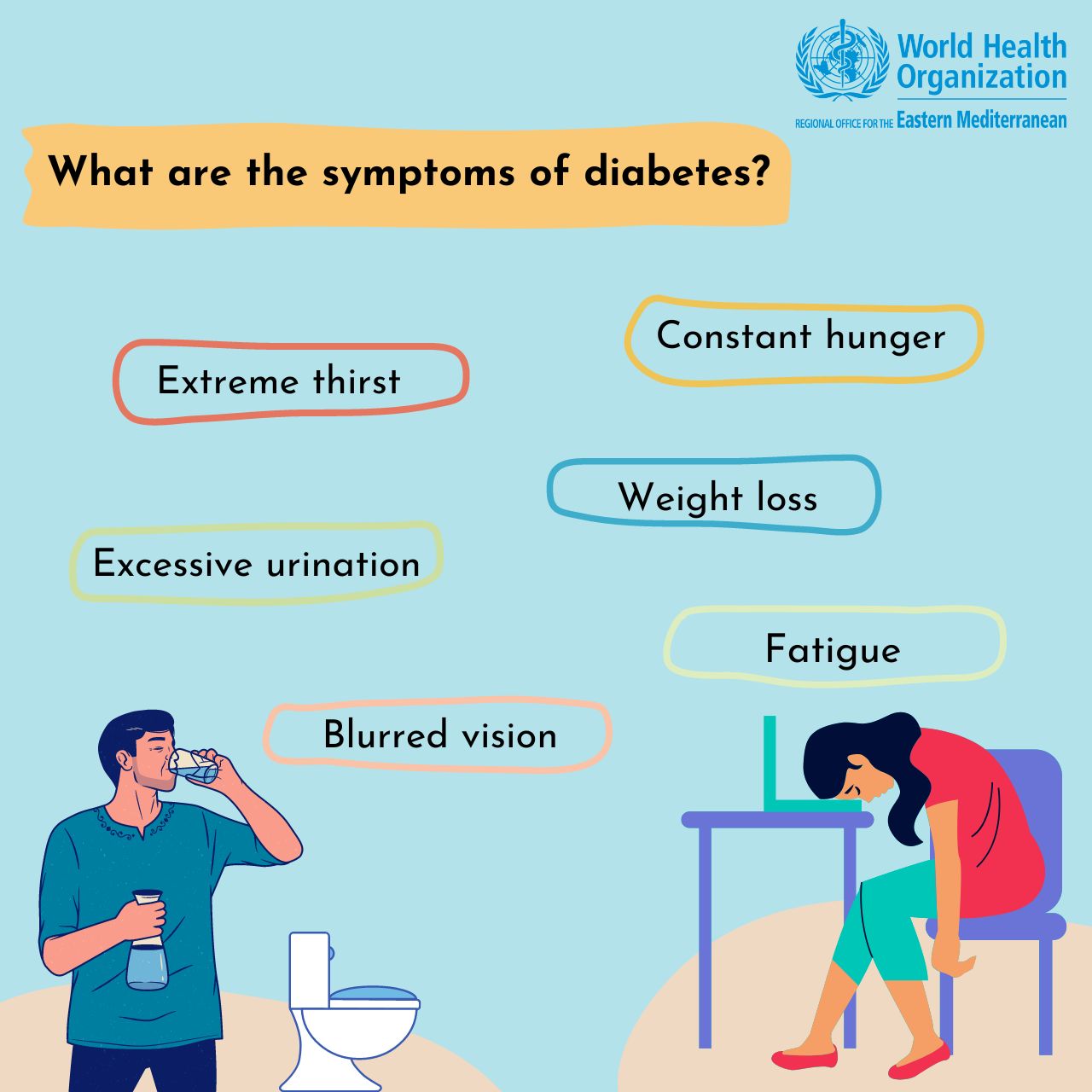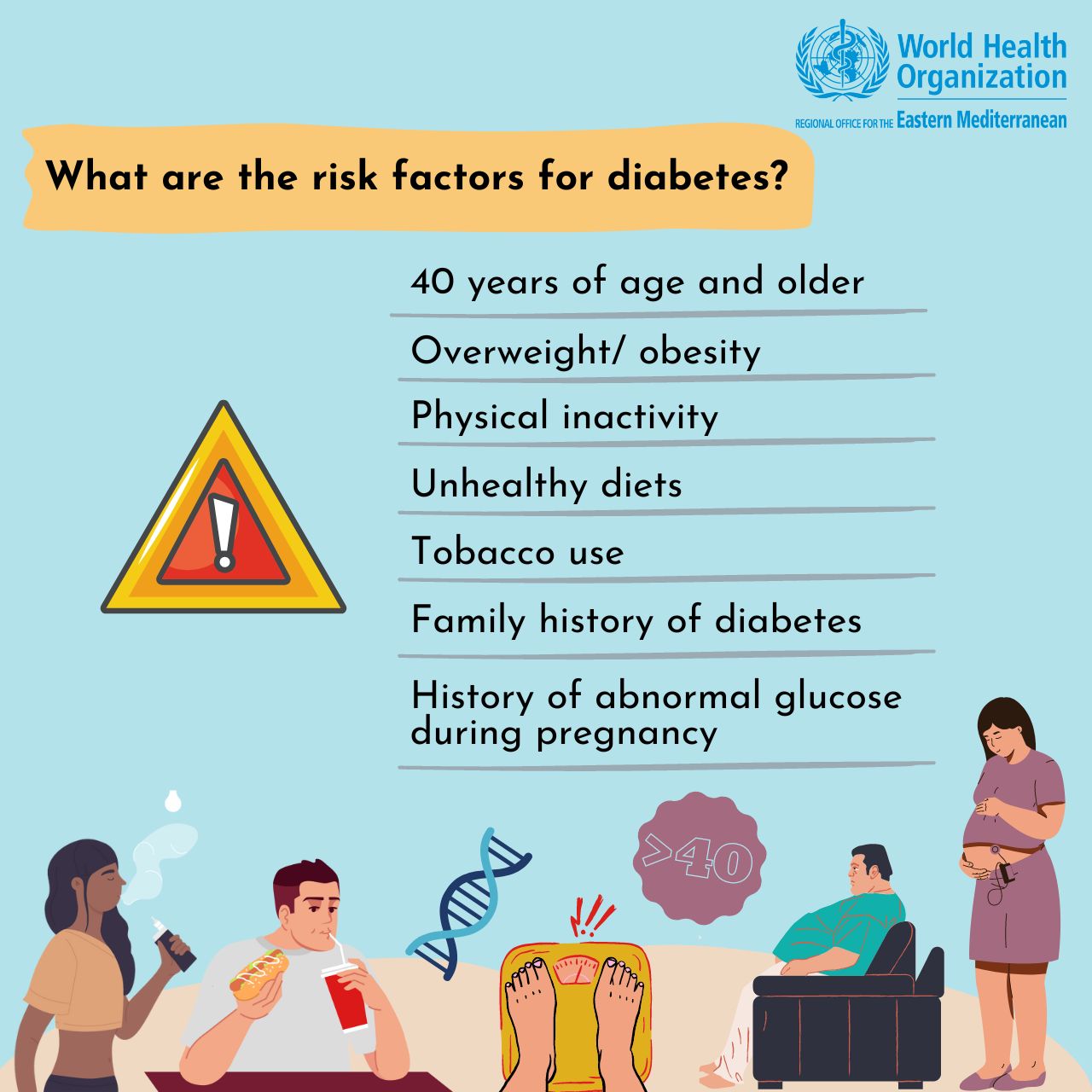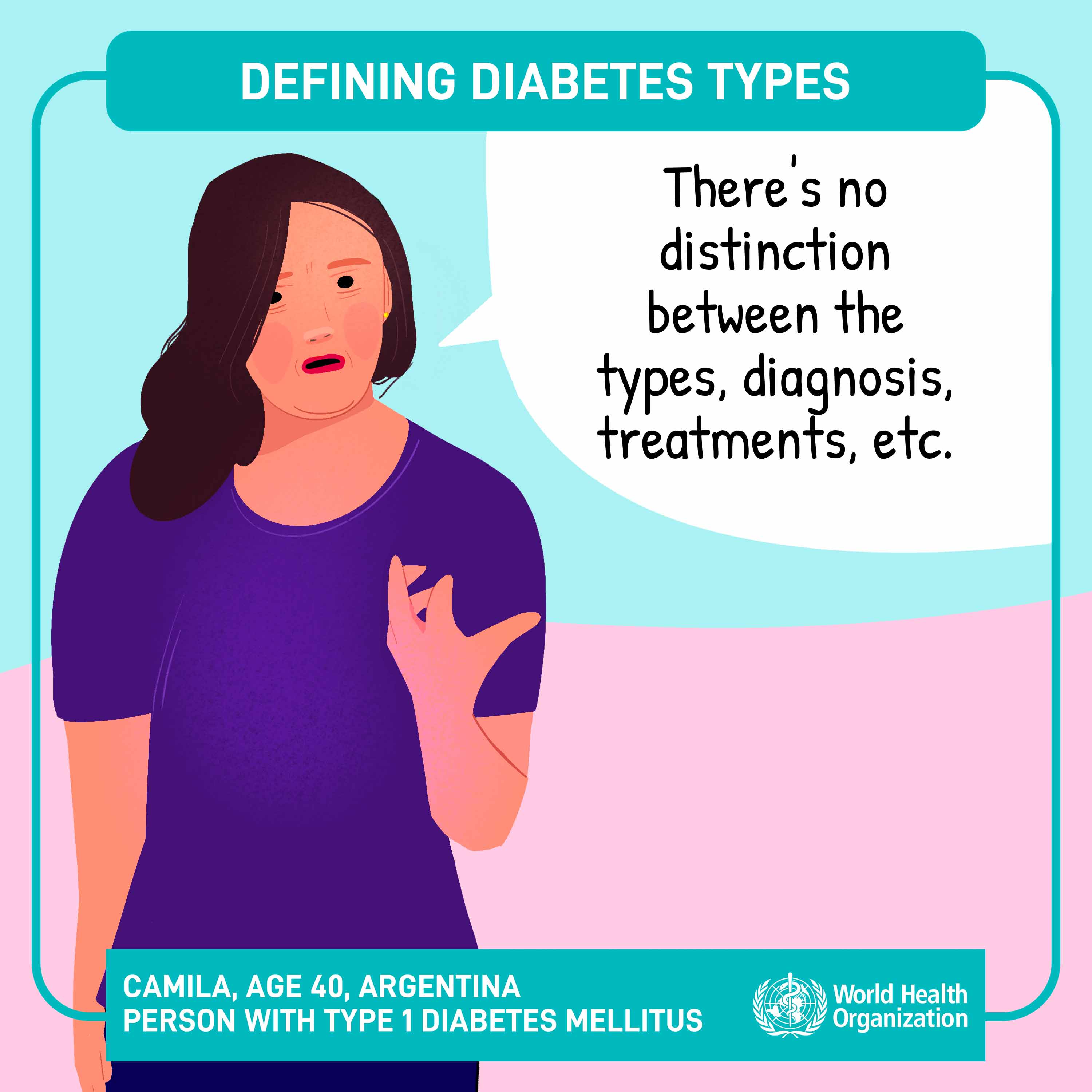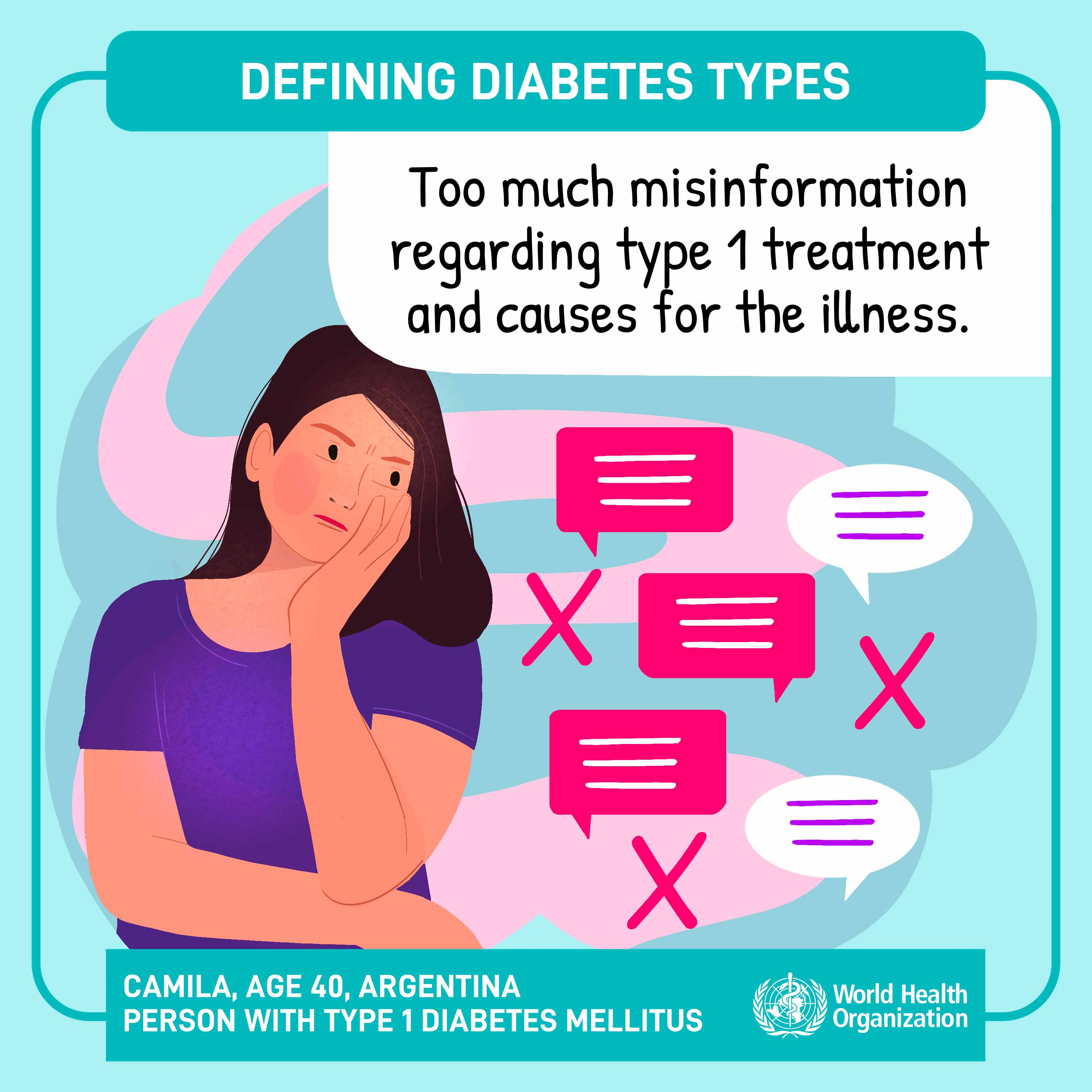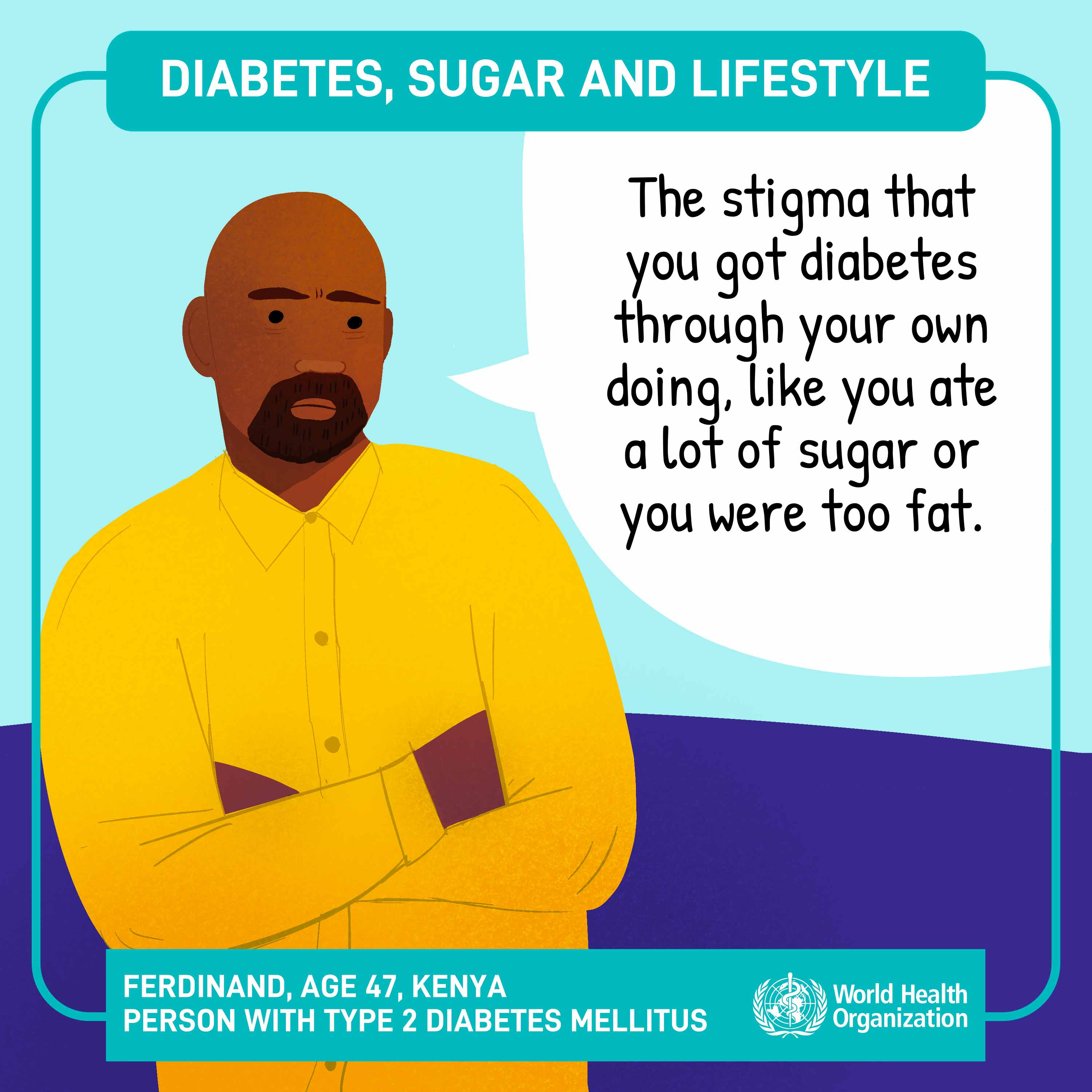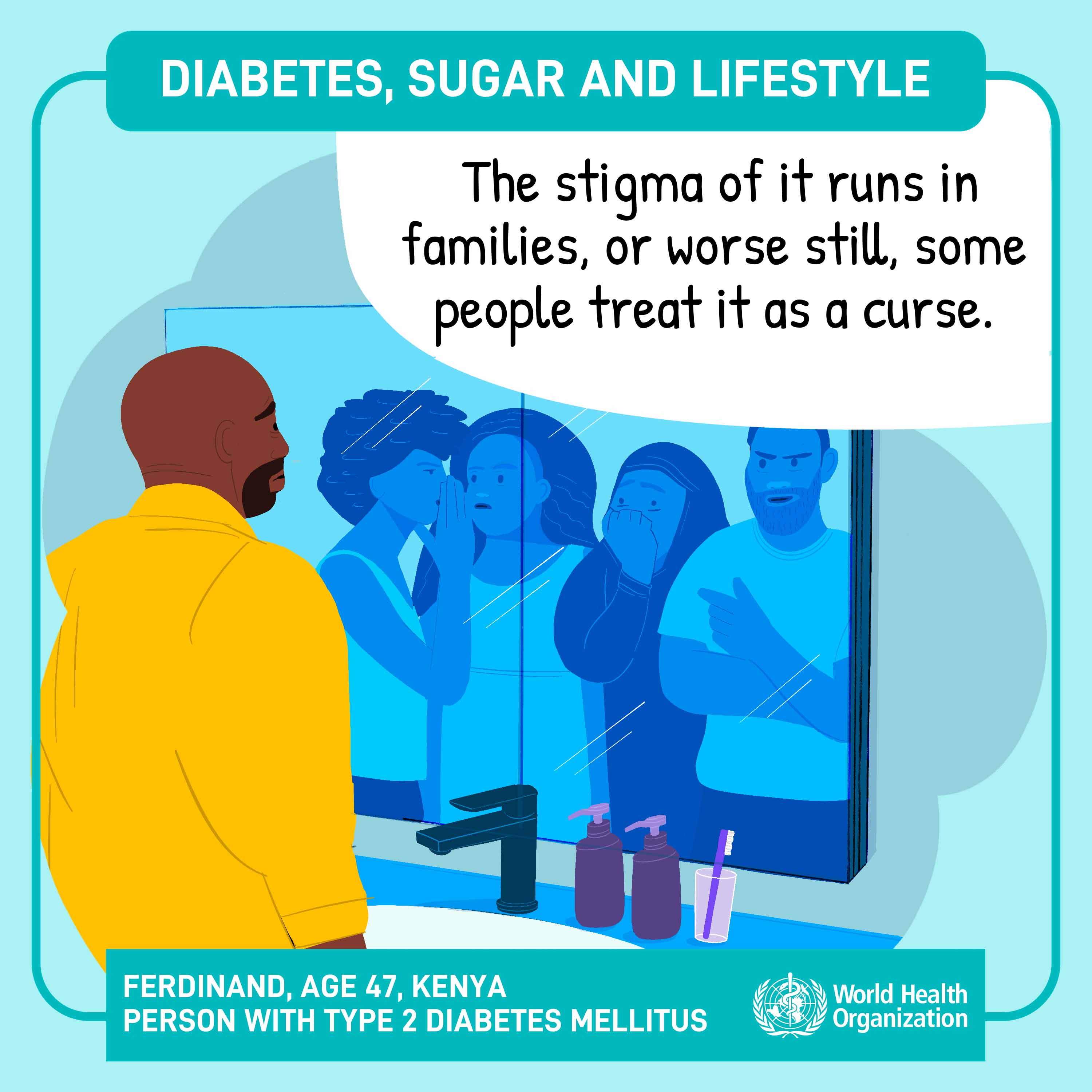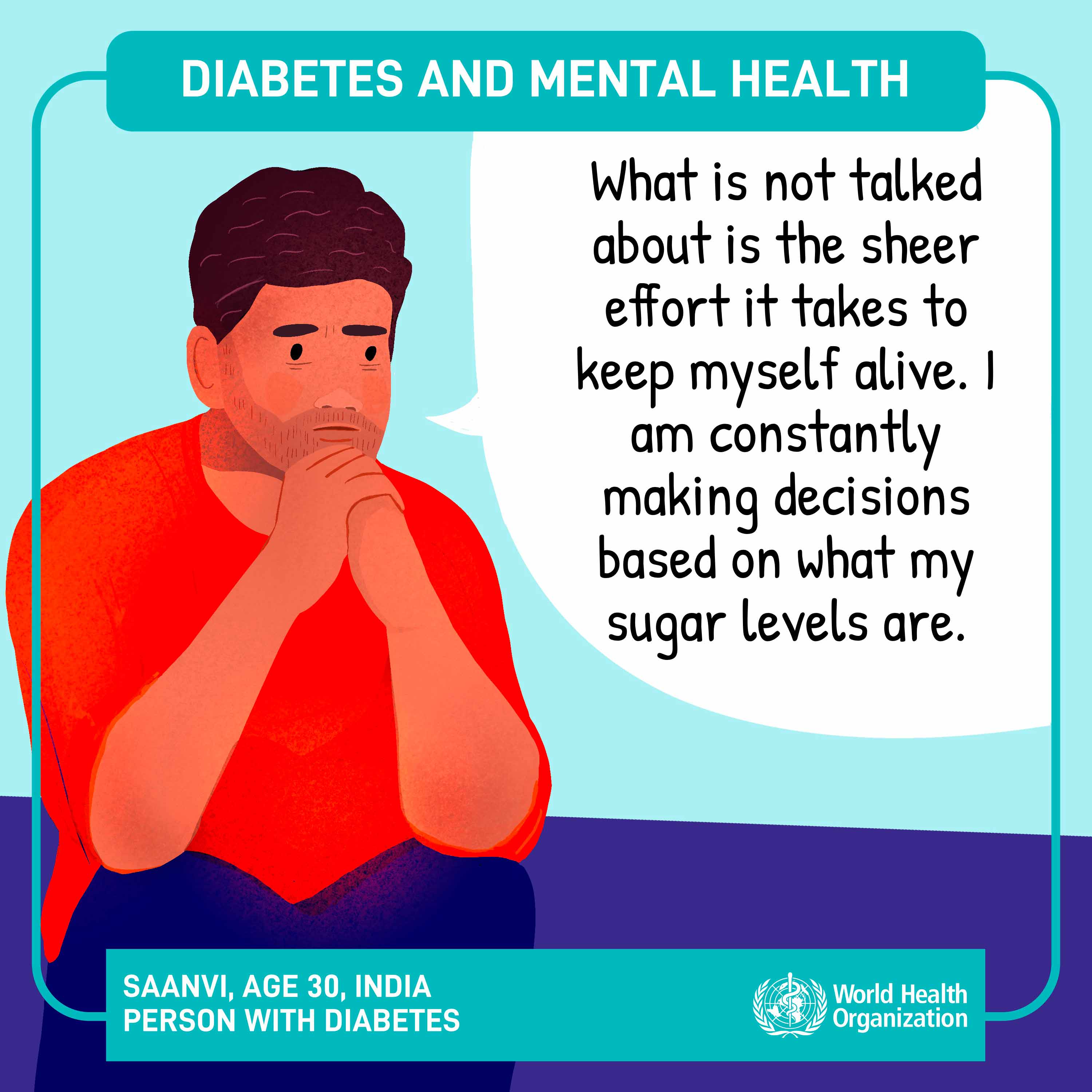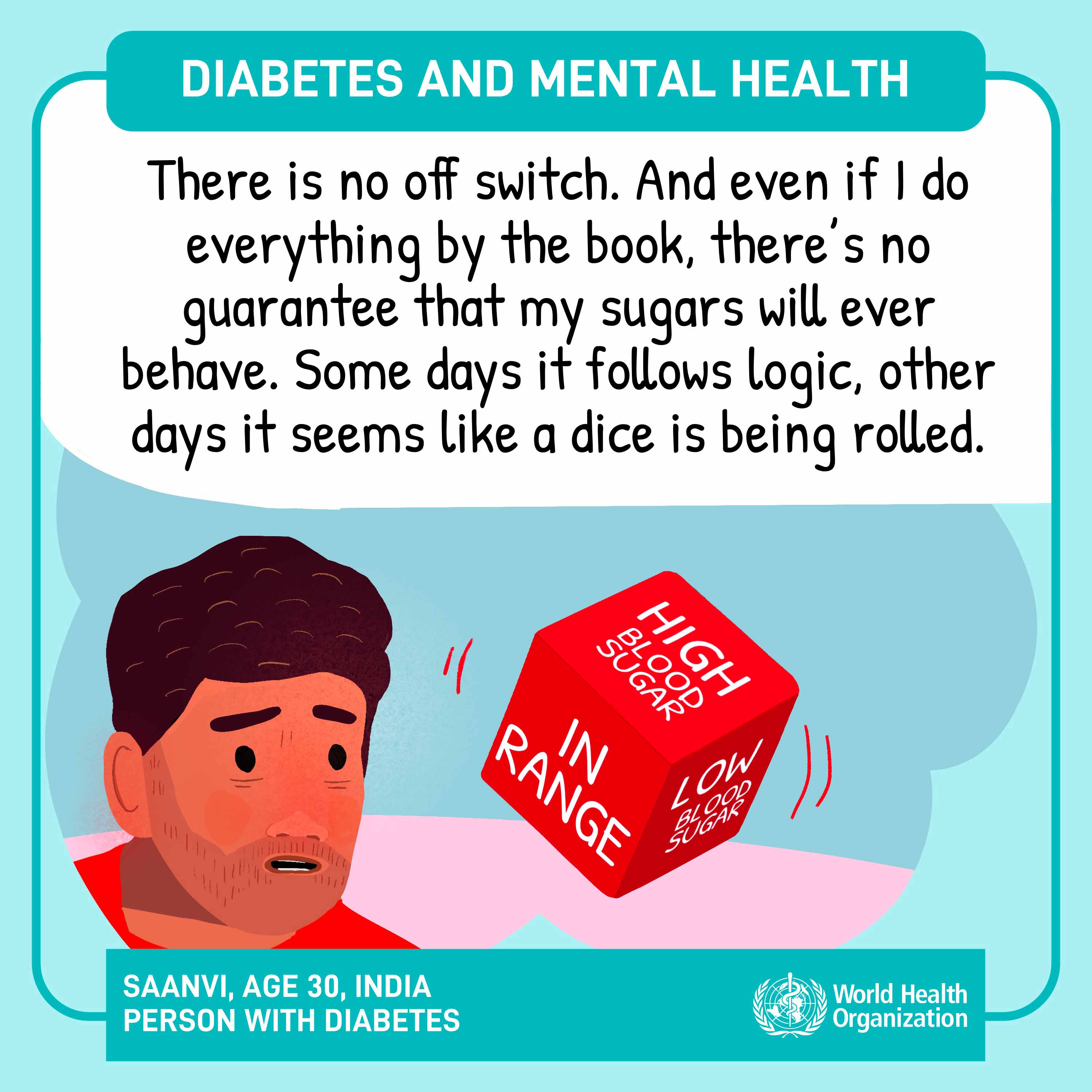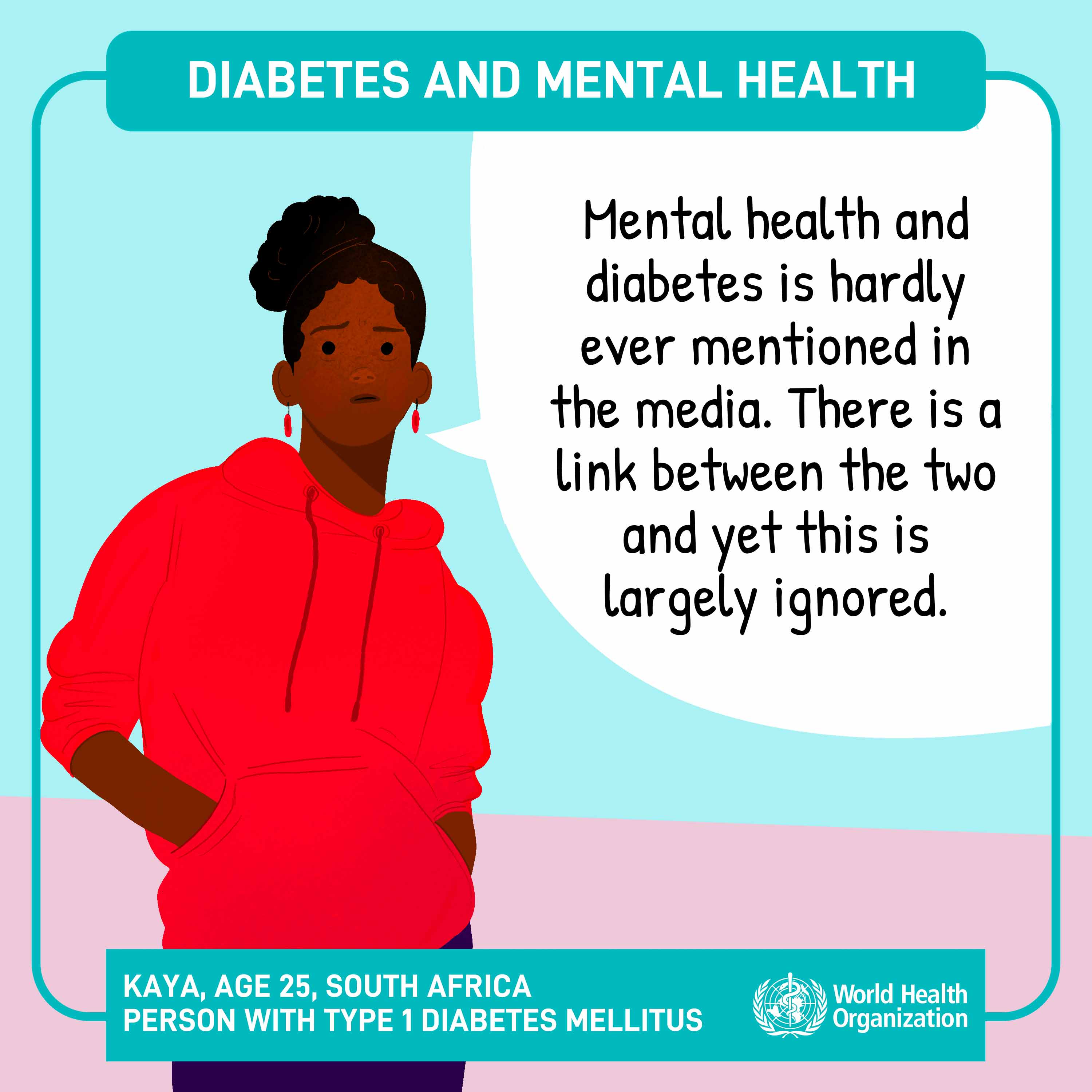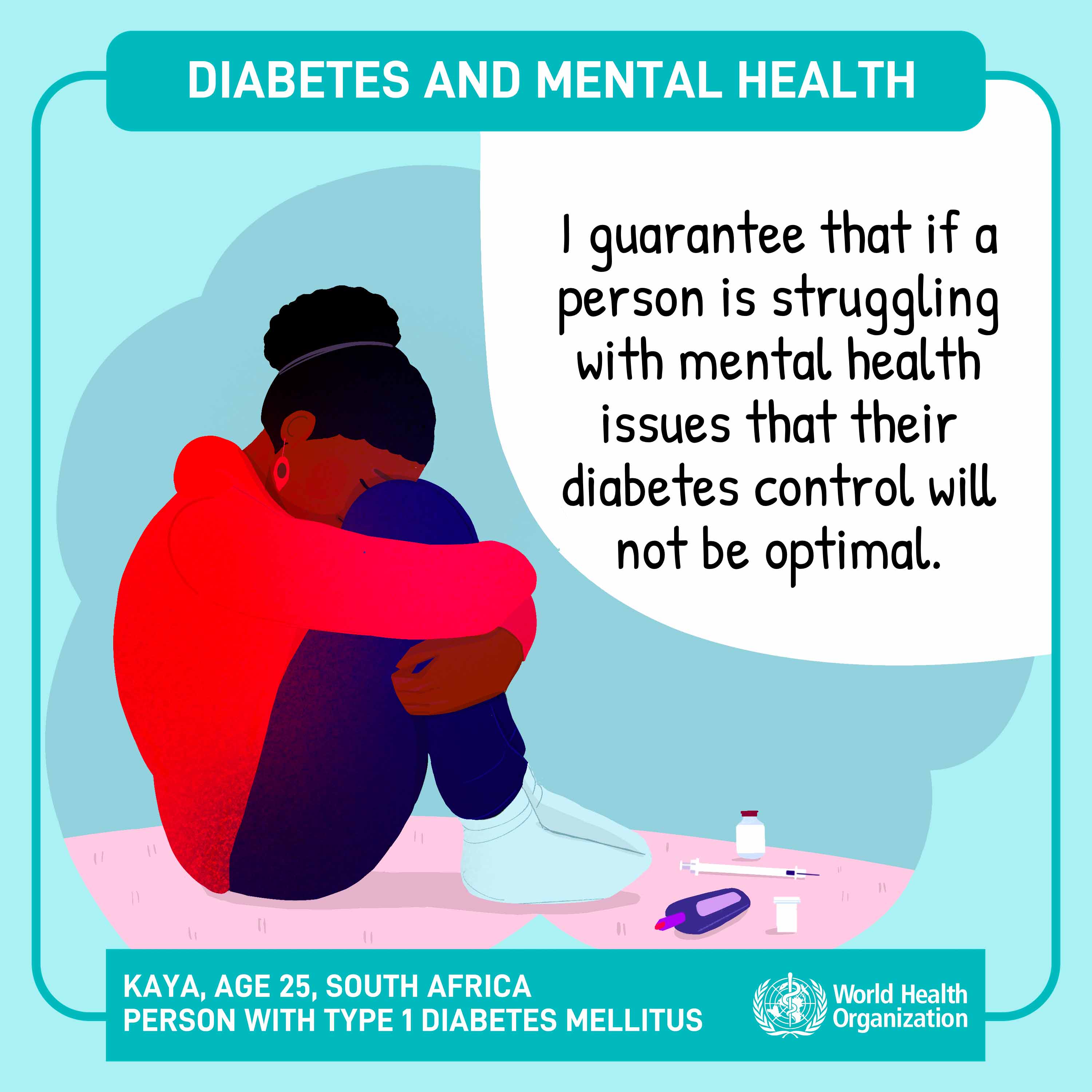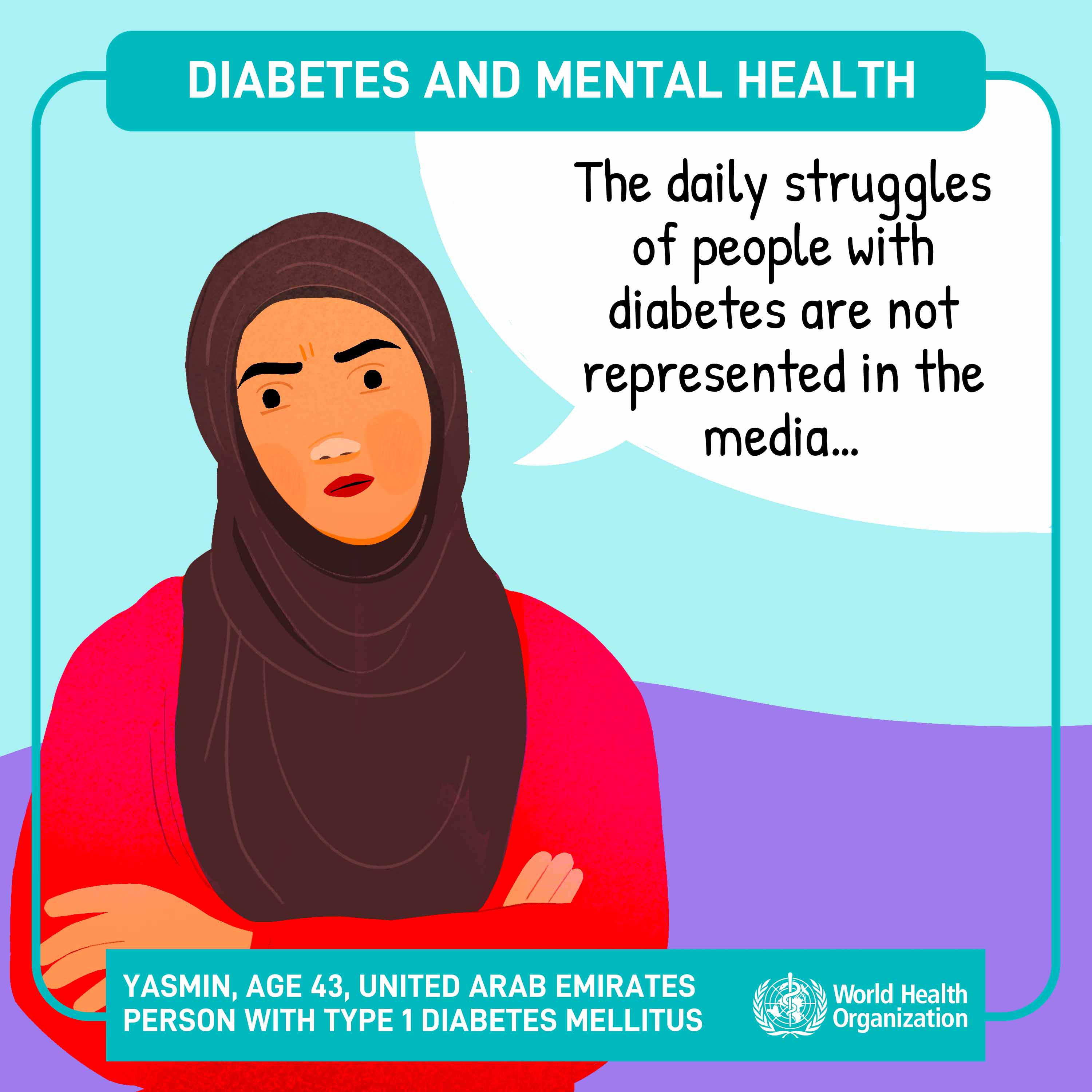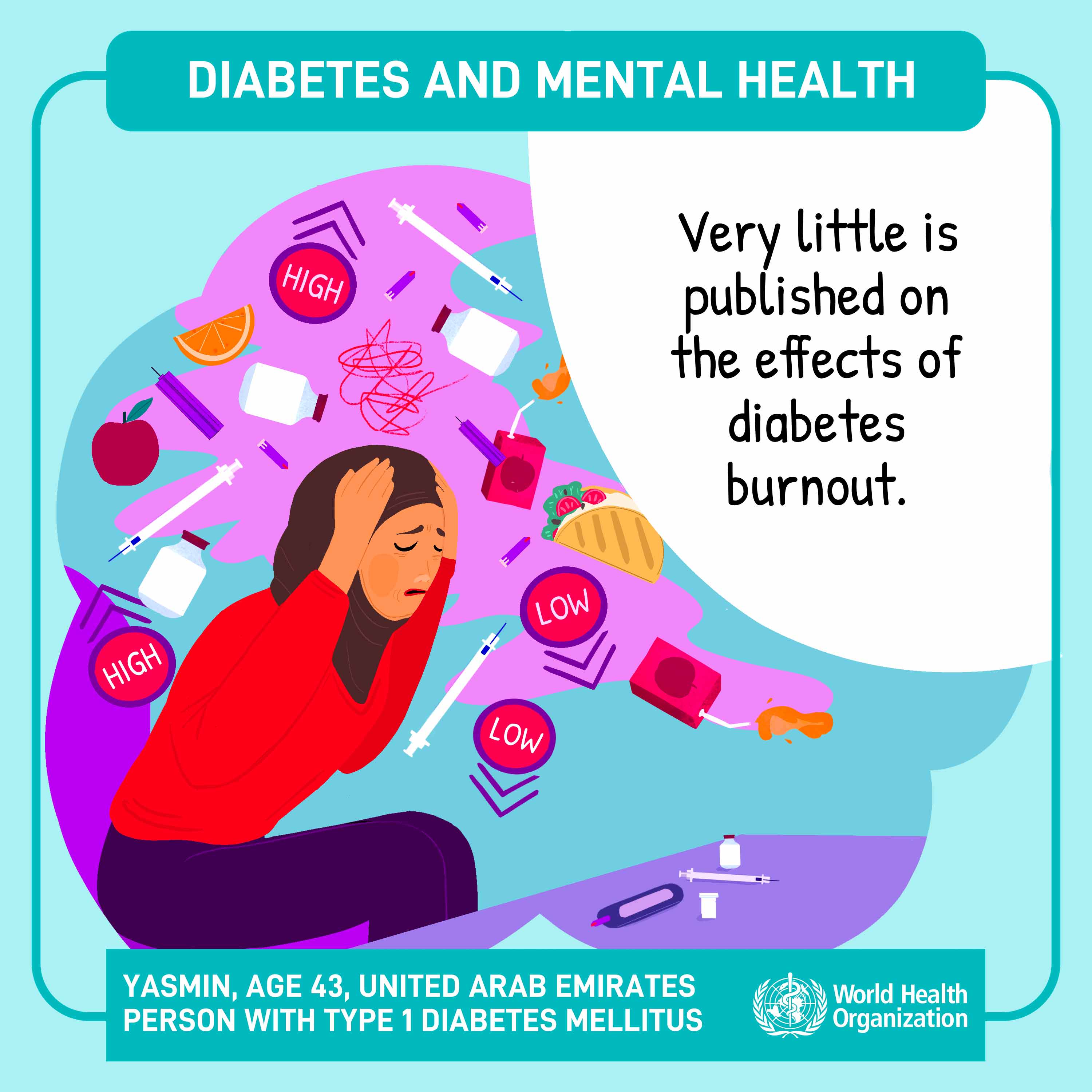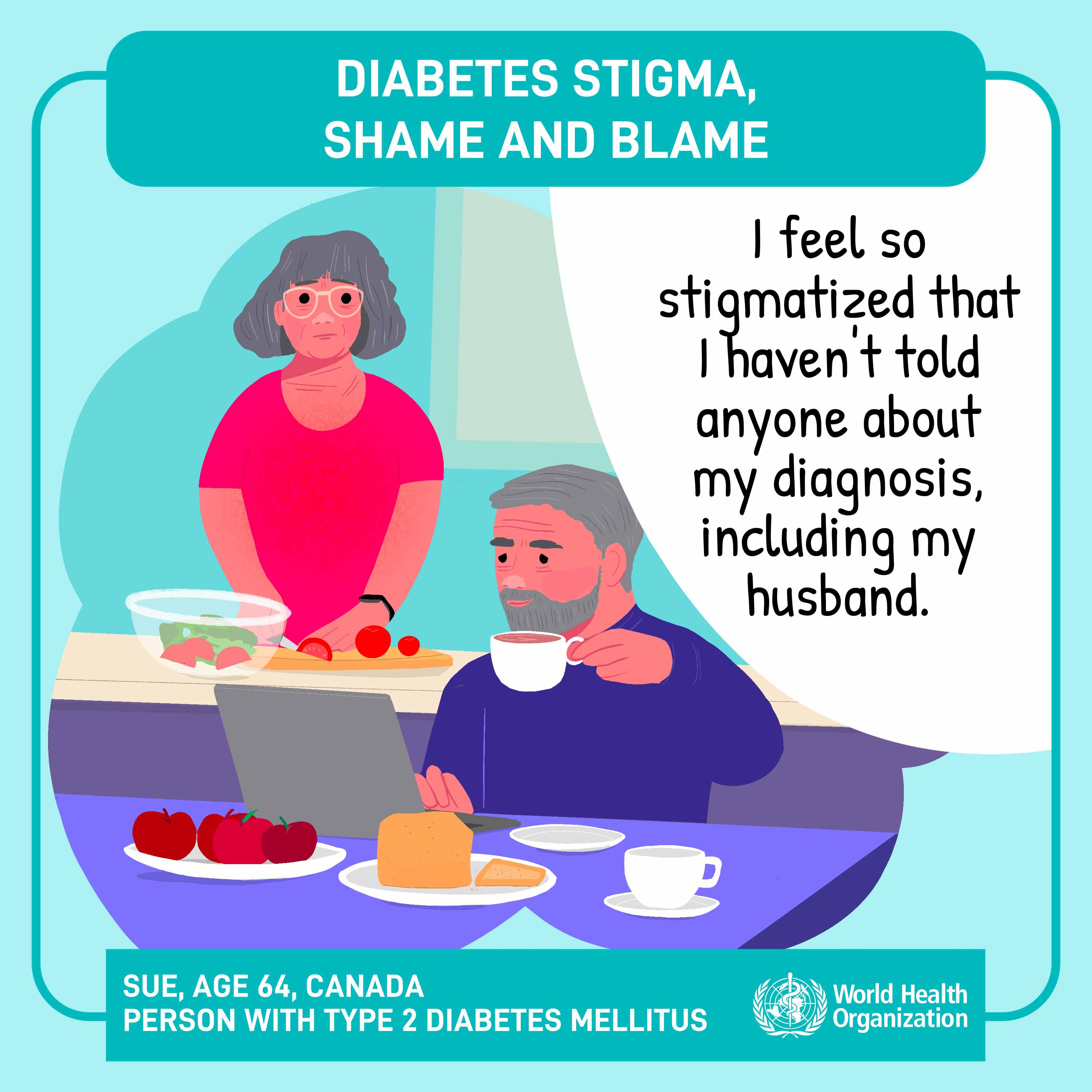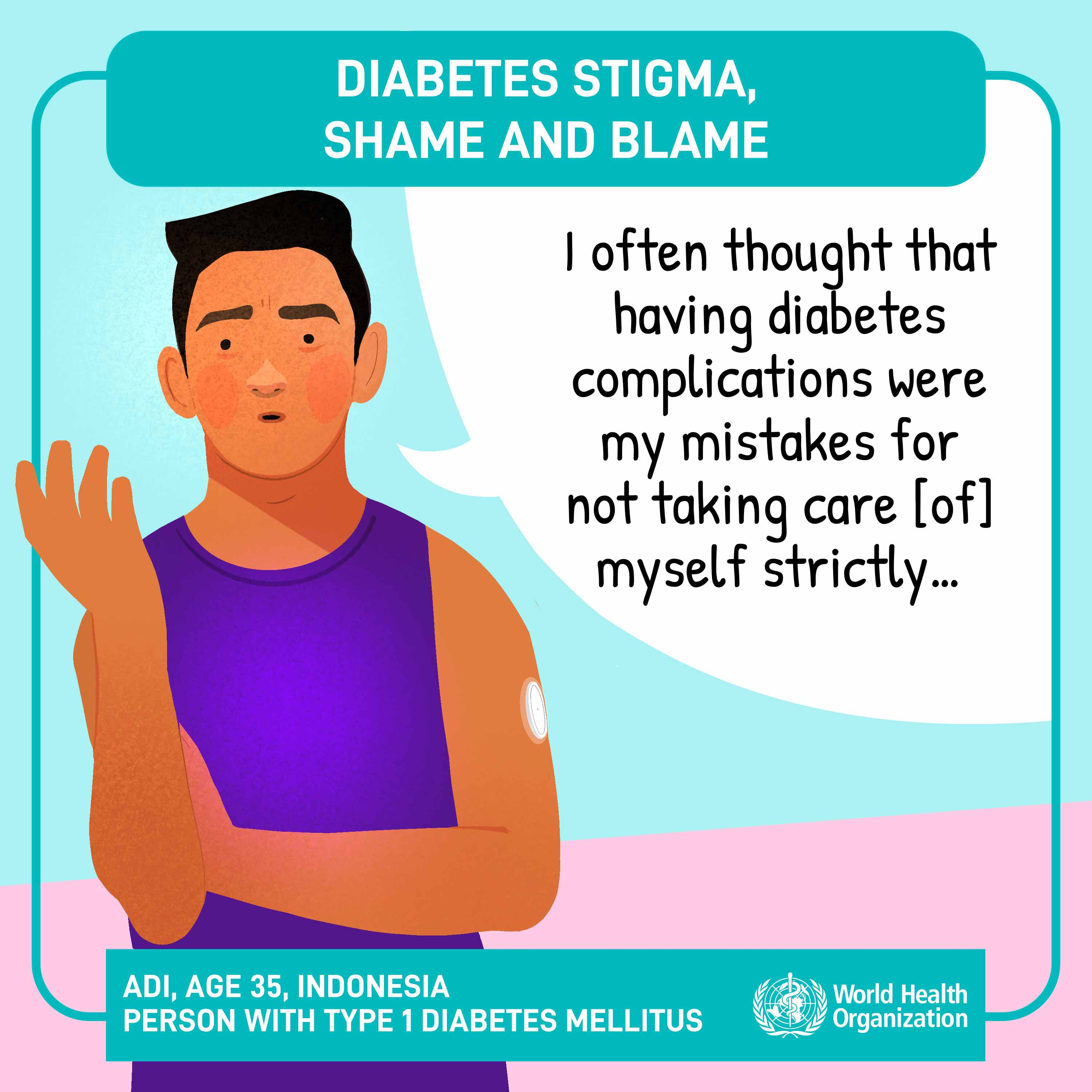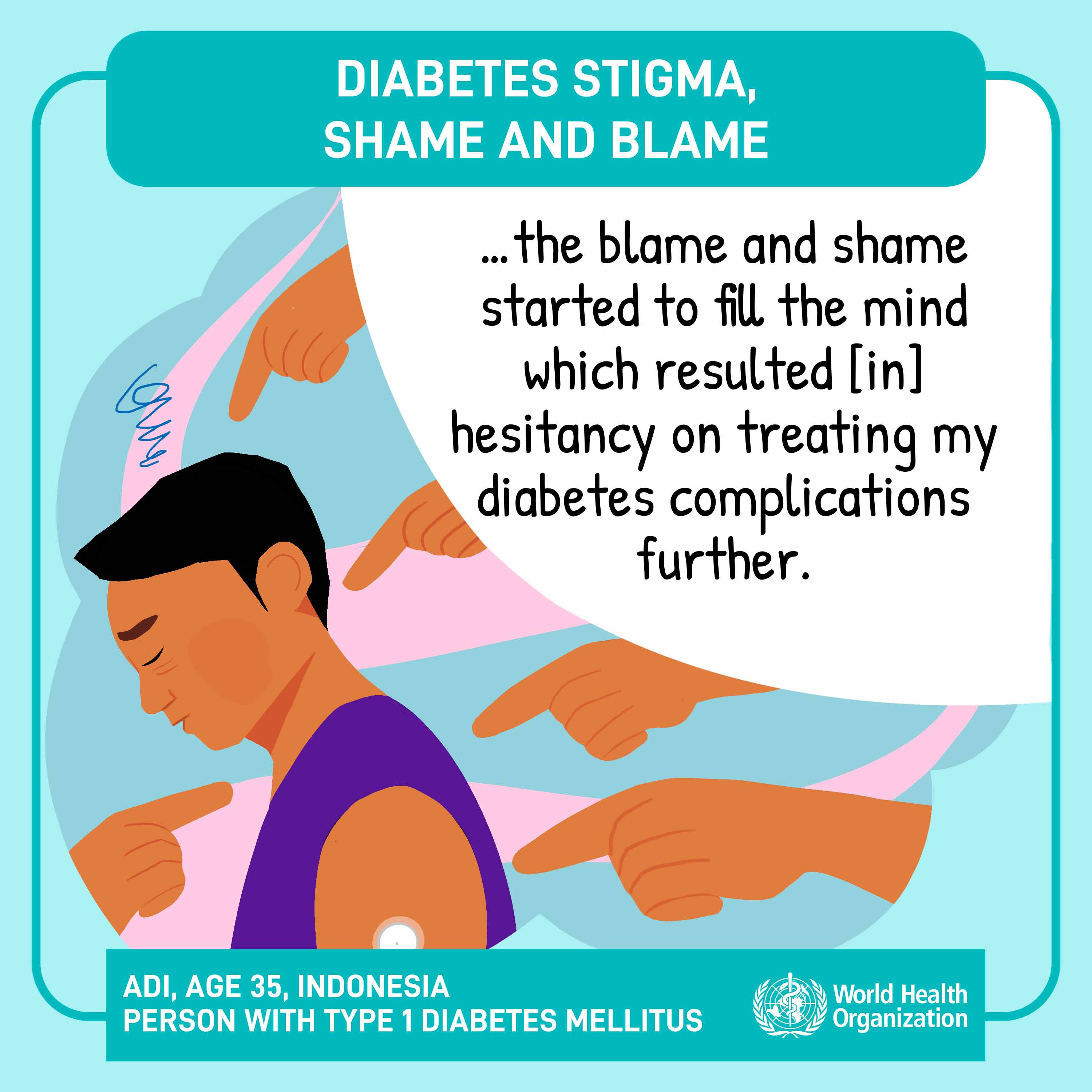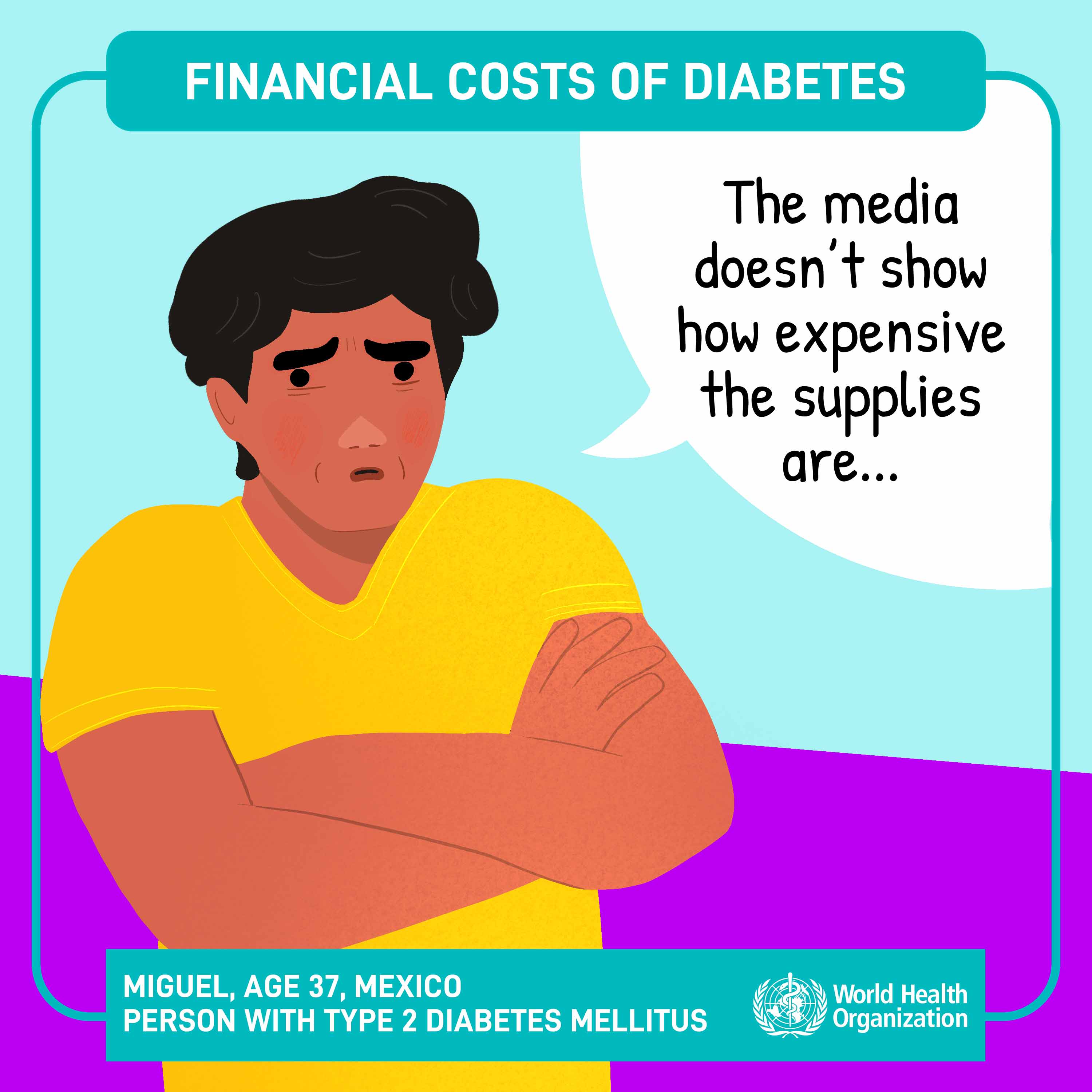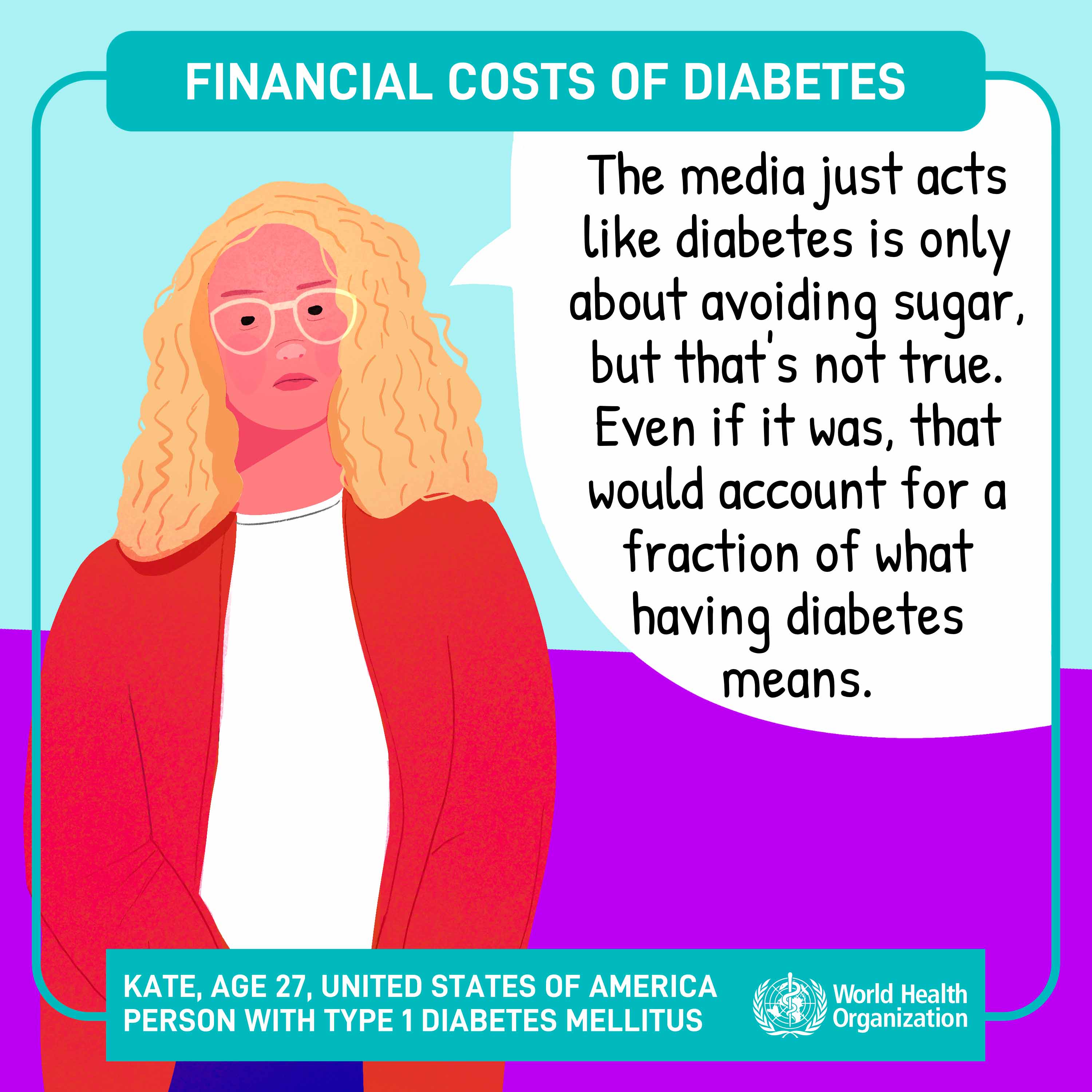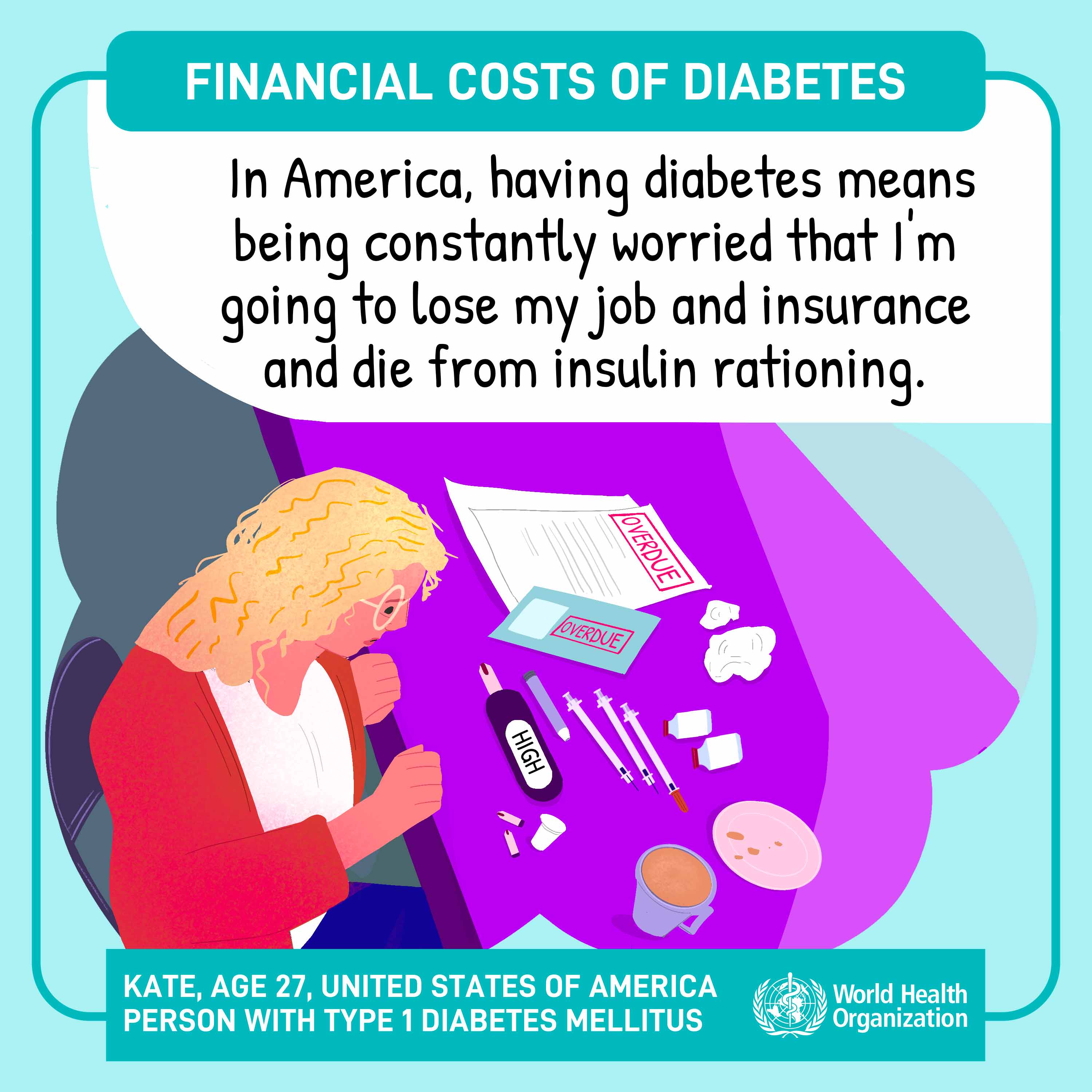Access to diabetes education
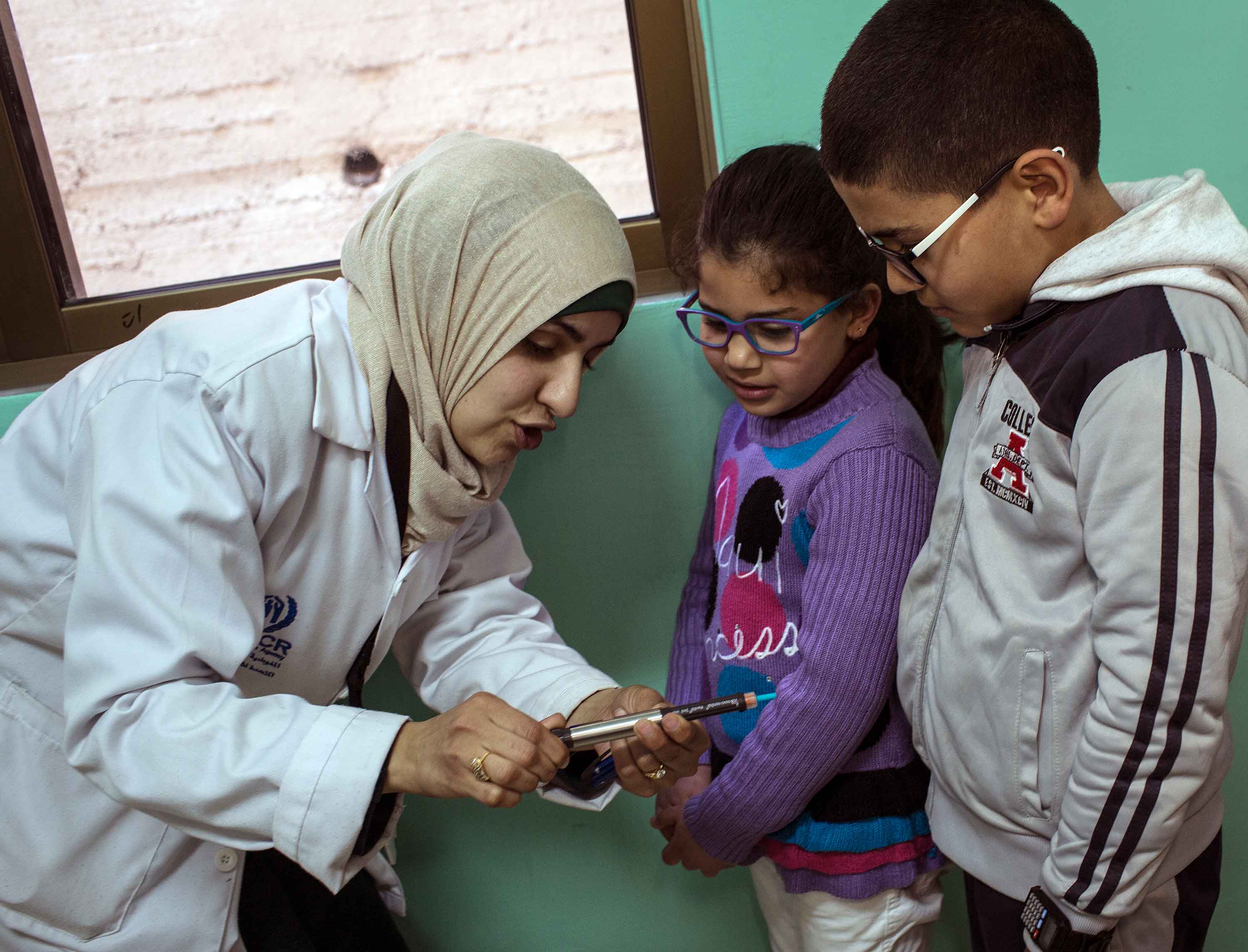
Currently, there are more than 420 million people living with diabetes worldwide. Deaths related to diabetes have increased by 70% globally between 2000 and 2019. In the Eastern Mediterranean Region, diabetes is a major public health challenge, affecting nearly 14% of people living in this region. It causes premature death and health consequences like heart attacks, stroke, blindness, kidney failure and amputation. By 2045, more than 100 million people in the Eastern Mediterranean Region may experience the heavy burden of diabetes.
World Diabetes Day provides an opportunity to raise awareness of diabetes as a global public health issue and what needs to be done, collectively and individually, for better prevention, diagnosis and management of the condition. This year’s theme “access to diabetes education”, underpins the larger multi-year theme of 'access to care'. It highlights the need for better access to quality diabetes education for health professionals and people living with diabetes. So on this day and beyond, let us transform our commitments into actions to build healthier communities with better access to quality diabetes education, diabetes medicines and care.
Online training on the HEARTS technical package

Addressing cardiovascular disease and its major risk factors including diabetes at the primary health care level is very important for countries in the WHO Eastern Mediterranean Region. On World Diabetes Day 2022, the WHO Regional Office for the Eastern Mediterranean launched this online training on the HEARTS technical package, which is an interactive overview of the WHO HEARTS technical package. This training provides global examples and case studies over nine modules, and quizzes to test your retention of the material.
The HEARTS Technical package is a strategic approach to improving cardiovascular health in countries. These modules include an implementation guide. This package helps Ministries of Health to strengthen CVD management in primary health care settings. The practical, step-by-step modules are supported by an overarching technical document that provides a rationale and framework for this integrated approach to the management of NCDs.
Regional framework for action on diabetes prevention and control
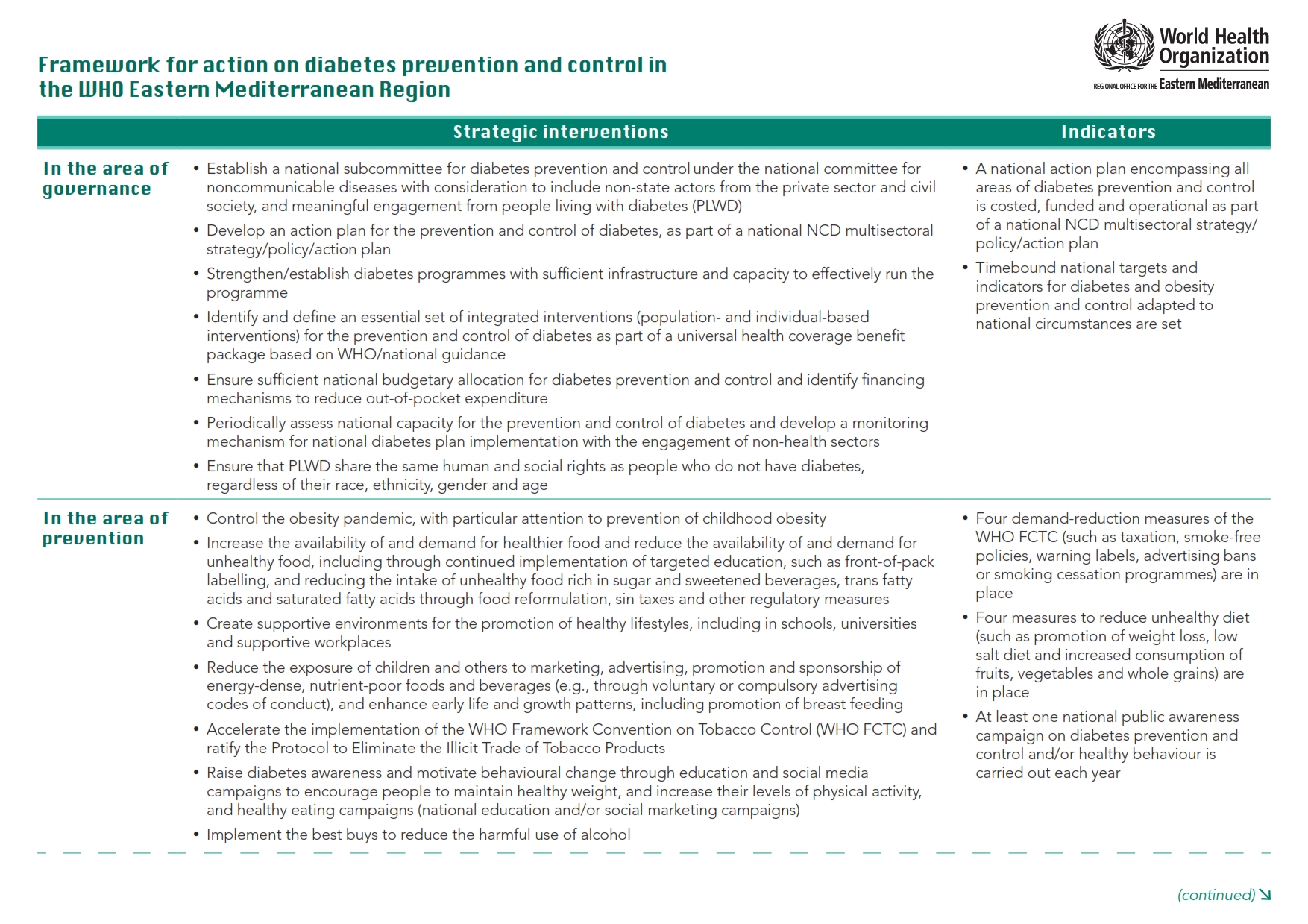
The Eastern Mediterranean Region has the highest rates of diabetes worldwide. Diabetes affects nearly 14% of people living in this region. Six out of the 10 countries with the highest rates of diabetes worldwide are in the Region.
Diabetes causes premature death and health consequences like heart attacks, stroke, blindness, kidney failure and amputation. By 2045, more than 100 million people in the Eastern Mediterranean Region may experience the heavy burden of diabetes.
Steps have been taken in this year’s Regional Committee for the Eastern Mediterranean where countries endorsed a framework for action to address diabetes as a public health challenge, with the aim of halting the rise in diabetes and reducing premature deaths from noncommunicable diseases by 2030.
Regional framework for action on diabetes prevention and control
Addressing diabetes as a public health challenge in the Eastern Mediterranean Region
WHO Global Diabetes Compact: an opportunity for lasting change
In April 2021, WHO, together with the Government of Canada, launched the Global Diabetes Compact – an ambitious new initiative to galvanize efforts around the world to both reduce the risk of diabetes, and ensure that all people diagnosed with diabetes have access to equitable, comprehensive, affordable and quality treatment and care. The Compact brings together in one package all WHO materials available for the prevention and management of diabetes, both existing and new.
The WHO Global Diabetes Compact has the vision of reducing the risk of diabetes, and ensuring that all people who are diagnosed with diabetes have access to equitable, comprehensive, affordable and quality treatment and care. The work undertaken as part of the Compact will also support the prevention of type 2 diabetes from obesity, unhealthy diet and physical inactivity. Key to the success of the Compact will be alignment and united action across all sectors ̶ public, private and philanthropic.
Diabetes
What is diabetes?
Diabetes is a chronic illness that raises sugar (glucose) levels in the blood. If not controlled, raised blood glucose levels can lead to serious complications.
Type 1 diabetes
Type 1 diabetes (previously known as insulin-dependent, juvenile or childhood-onset) is characterized by deficient insulin production and requires daily administration of insulin. In 2017 there were 9 million people with type 1 diabetes; the majority of them live in high-income countries. Neither its cause nor the means to prevent it are known. Symptoms include excessive excretion of urine (polyuria), thirst (polydipsia), constant hunger, weight loss, vision changes and fatigue. These symptoms may occur suddenly.
Type 2 diabetes
Type 2 diabetes (formerly called non-insulin-dependent or adult-onset) results from the body’s ineffective use of insulin. More than 95% of people with diabetes have type 2 diabetes. This type of diabetes is largely the result of excess body weight and physical inactivity. Symptoms may be similar to those of type 1 diabetes but are often less marked. As a result, the disease may be diagnosed several years after onset, after complications have already arisen. Until recently, this type of diabetes was seen only in adults but it is now also occurring increasingly frequently in children.
Gestational diabetes
Gestational diabetes is hyperglycaemia with blood glucose values above normal but below those diagnostic of diabetes. Gestational diabetes occurs during pregnancy. Women with gestational diabetes are at an increased risk of complications during pregnancy and at delivery. These women and possibly their children are also at increased risk of type 2 diabetes in the future. Gestational diabetes is diagnosed through prenatal screening, rather than through reported symptoms.
Impaired glucose tolerance and impaired fasting glycaemia
Impaired glucose tolerance (IGT) and impaired fasting glycaemia (IFG) are intermediate conditions in the transition between normality and diabetes. People with IGT or IFG are at high risk of progressing to type 2 diabetes, although this is not inevitable.
Check for diabetes
What are the complications?

Heart attacks
Stroke
Blindness
Lower limb amputation
Kidney failure
What are the risk factors?

40 years of age and older
Overweight/obesity
Physical inactivity
Unhealthy diet
Tobacco use
Family history of diabetes
History of abnormal glucose during pregnancy
What are the symptoms?

Constant thirst
Constant hunger
Excessive urination
Weight loss
Blurred vision
Fatigue
Living with diabetes
You can live a long, healthy and productive life despite having diabetes, provided it is diagnosed early and managed effectively.

Adopt a healthy lifestyle
Eat healthy
Eat more fruit and vegetables
Reduce sugar and fat intake
Be active
Engage in 30 minutes of regular, moderate-intensity activity on most days
Do not use tobacco
Follow medical advice
Control blood glucose
Control blood pressure
Get regular check-ups
Adhere to medication





